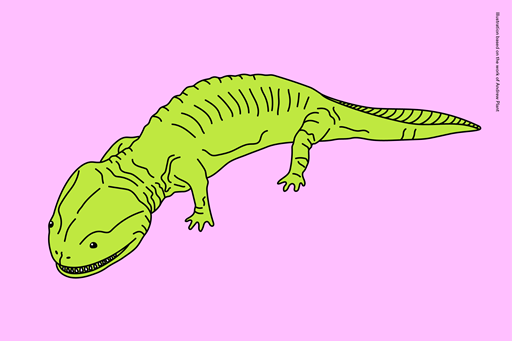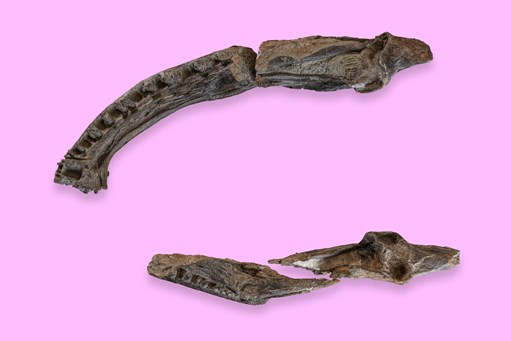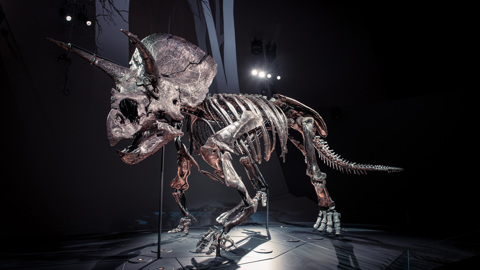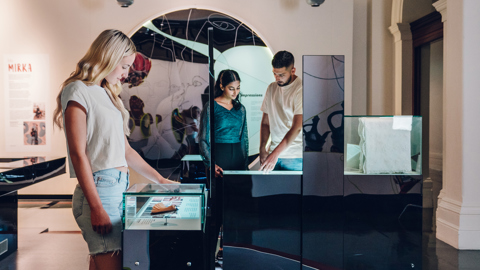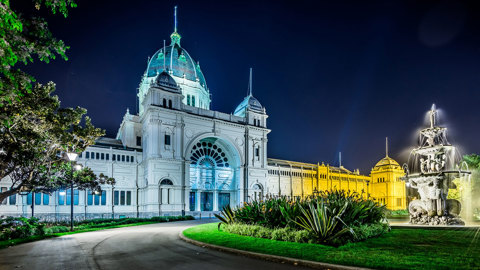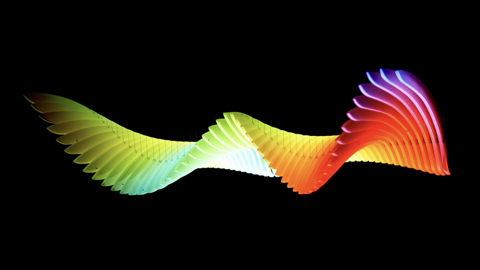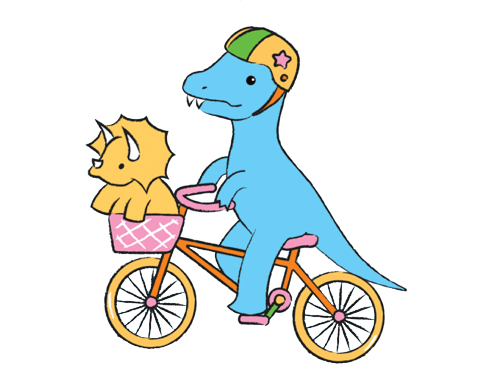4. Koolasuchus cleelandi
Cool Cretaceous monster amphibian
The car-sized amphibian Koolasuchus lived alongside dinosaurs in Victoria during the Cretaceous Period. In a head the size of a dustbin lid were dozens of ridged fangs for piercing prey, and two-inch tusks growing from the roof of its mouth.
Resembling something between a huge newt and a crocodile, Koolasuchus was adapted to life in the rushing rivers that once separated Australia and Antarctica. Its fossils are only found at a few beaches and coves in south Gippsland.
Koolasuchus was an unexpected discovery, as it is the long-last member of its lineage, known as the temnospondyls. It lived in Victoria as much as 50 million years after all other temnospondyls went extinct worldwide.
About the animal
|
Scientific name |
Koolasuchus cleelandi |
|
How do you say its name? |
Cool-a-SOO-cuss clee-LAN-die |
|
How big? |
About four metres long |
|
When did it live? |
Around 125 million years ago |
|
What did it eat? |
Small dinosaurs, turtles, and fish |
Fossil facts
|
Significant Victorian location |
San Remo, South Gippsland |
|
Traditional Owners |
|
|
Who found it? |
Michael Cleeland |
|
Who named it? |
Vertebrate palaeontologist Professor Anne Warren |
|
What is special about it? |
It is a 'relic' species that lived 50 million years after its relatives went extinct. |
|
Significance of the fossil |
Koolasuchus is unique to Victoria. |
|
Full name and meaning |
Named for Michael Cleeland and Lesley Kool, who found the first Koolasuchus fossil and prepared it from surrounding rock. |
